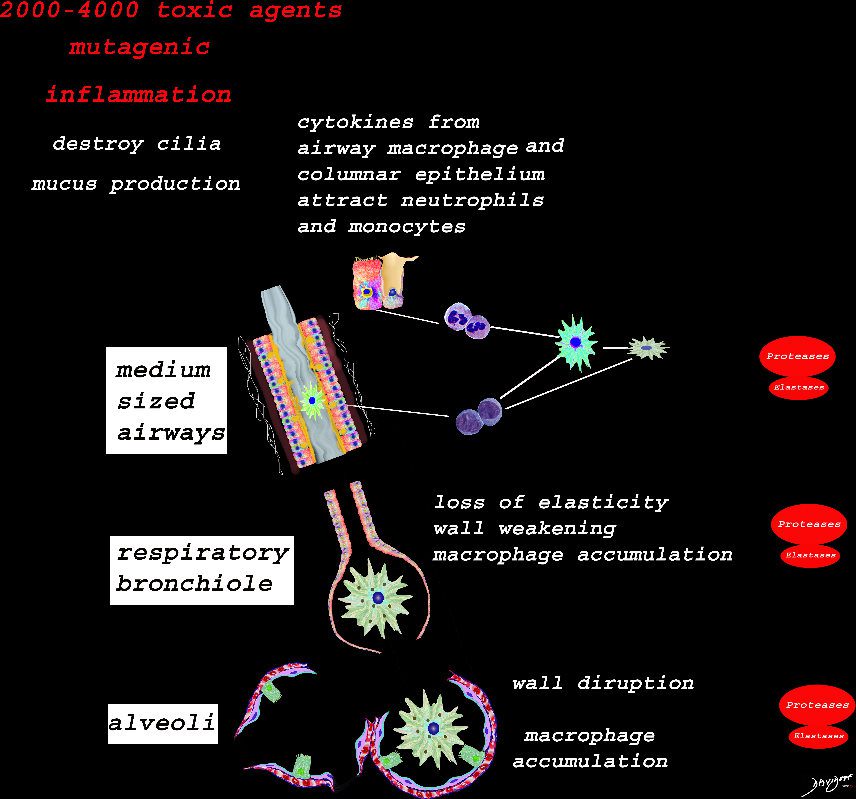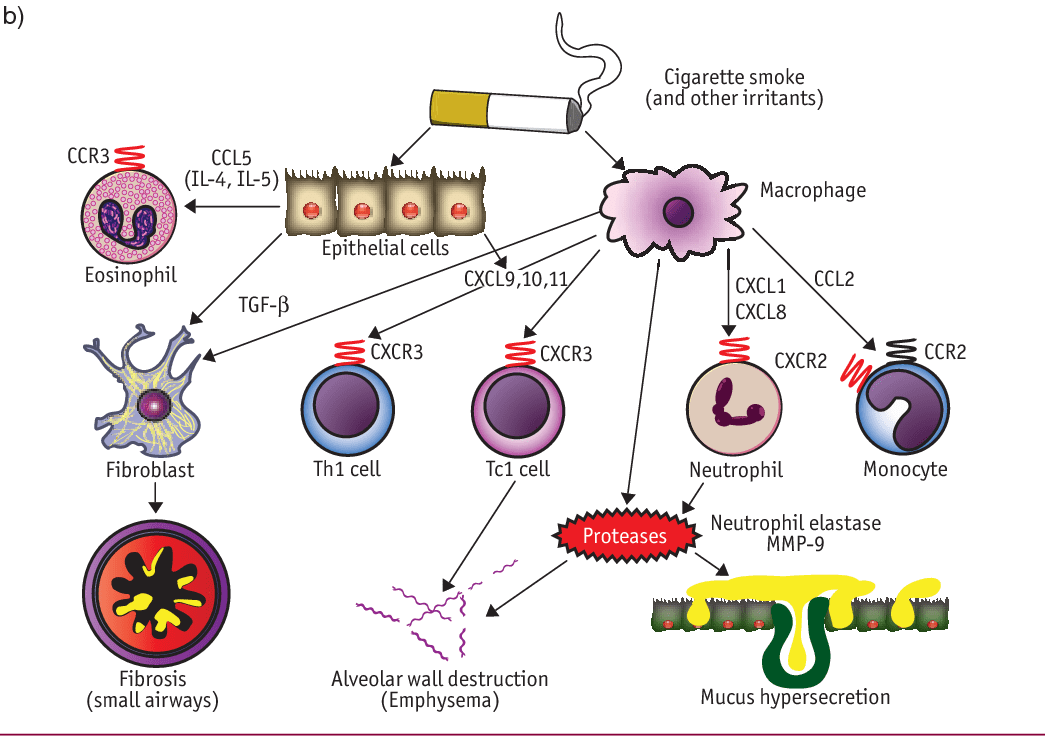Tobacco smoke is a toxic mix of more than 7,000 chemicals and compounds

Ashley Davidoff
TheCommonVein.net
- Tobacco smoke contains chemicals in the form of
- particulate substances and
- gases.
- Smoking causes increased cellularity of both
- Alveolar macrophages
- smoking influences the phenotype of pulmonary macrophages, resulting in
- more undifferentiated immature monocyte-like macrophages with a
- reduction in the mature AM surface markers needed for
- phagocytosis,
- efferocytosis,
- cell–cell and cell to matrix interaction
- The increase in the immature macrophages seen in smokers may be due to the influx of monocyte-derived cells from the peripheral blood, with the additional increase due to AM proliferation within the lung.38
- reduction in the mature AM surface markers needed for
- more undifferentiated immature monocyte-like macrophages with a
- smoking influences the phenotype of pulmonary macrophages, resulting in
- Neutrophils
- Alveolar macrophages
- may be explained by chemotactic factors generated in the lung
- Resulting in release of
- proteases
- from macrophages and neutrophils
- smoke evokes an inflammatory cell reaction and that these cells release proteases that overwhelm the antiproteolytic defenses of the lower respiratory tract,
- Proteinase/anti-proteinase imbalance and tissue destruction
one of the causes of smoking-related lung damage is through the imbalance of proteolytic enzymes (proteinases) - Smoking tips the balance of proteinase/anti-proteinase release from AMs, contributing to cell death alongside inadequate repair, with elastolysis and connective tissue destruction, all of which are involved in the pathology of emphysema.
- Proteinase/anti-proteinase imbalance and tissue destruction
- cytotoxic,
- mutagenic and
- proinflammatory substances contained in cigarettes
- Surfactant
- smoking is associated with reduced surfactant phospholipids
- fibrotic factors
- proteases

Revised from an article Barnes P , Mechanisms in COPD compared with asthma Semantic Scholar
T helper type 1 (Th1) cells are a lineage of CD4+ effector T cell that promotes cell-mediated immune responses and is required for host defense against intracellular viral and bacterial pathogens. Th1 cells secrete IFN-gamma, IL-2, IL-10, and TNF-alpha/beta.
Macrophages
pigmented “smoker’s macrophages” in respiratory bronchioles and neighbouring alveoli, containing granular, yellow-brown cytoplasmic pigments
References and Links
Barnes P , Mechanisms in COPD compared with asthma semantic Scholar
Benjamin, R MD, MBA VADM, USPHS, Surgeon GeneralExposure to Tobacco Smoke Causes Immediate Damage: A Report of the Surgeon General
Bohadana A et al Mechanisms of chronic airway obstruction in smokers Respiratory Medicine Volume 98, Issue 2, February 2004, Pages 139-151
TCV
